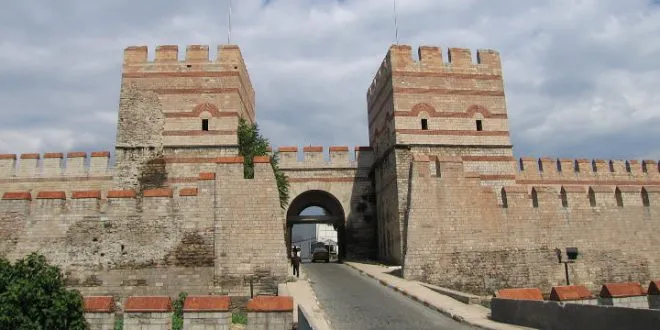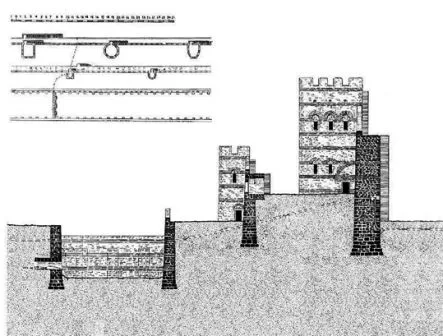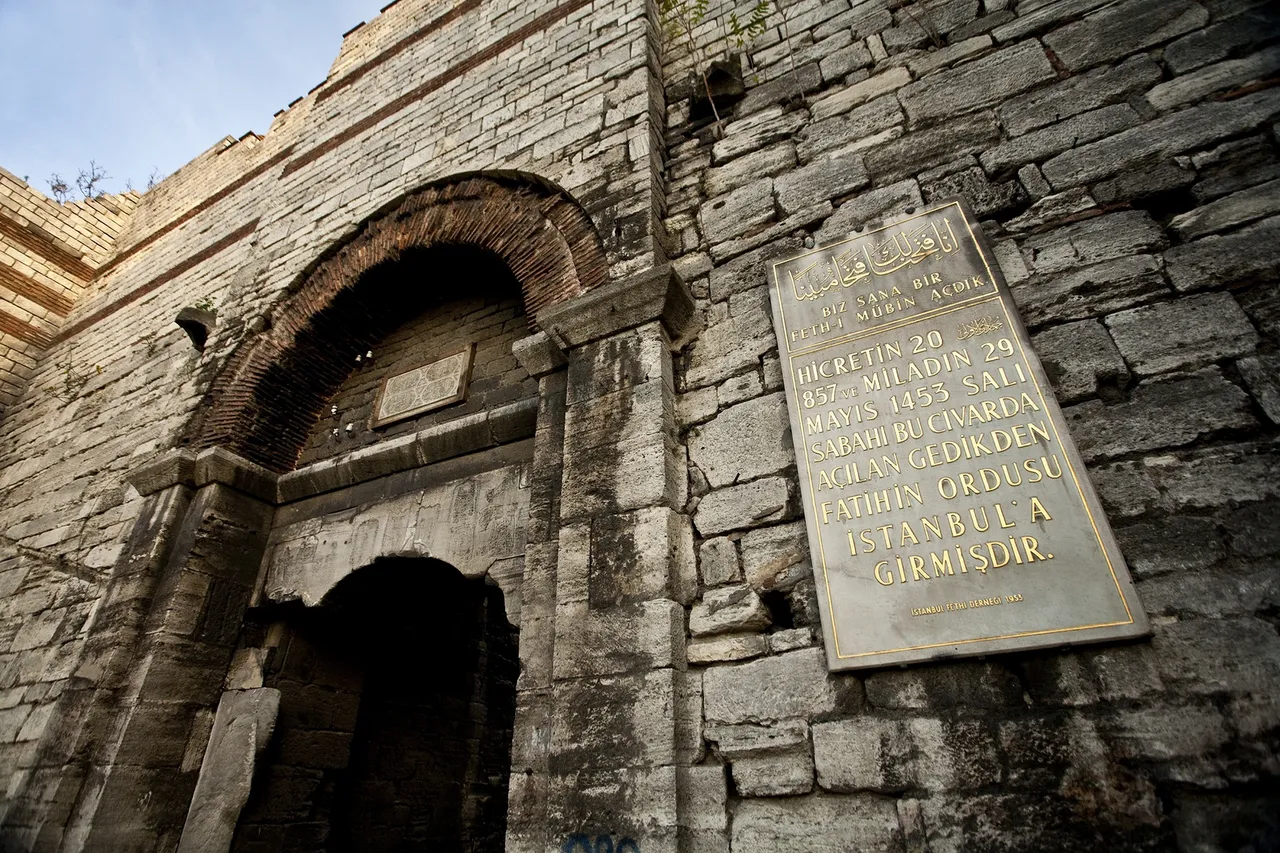The ramparts of Istanbul were first built in Sarayburnu when there was a small castle called Ligos and it was enlarged throughout history. The greatest contributions were made by the Roman emperors Constantine and Theodosius. Over time, gates and bastions were added on the frame of necessity and walls were woven on the sea side as the place approached.
The total length of Istanbul walls is approximately 22 - 23 km. It is 8 km on the land side, 6 km on the Golden Horn and 9 km on the sea side. As one who has traveled all over the walls, I can easily say: At the same time, these walls, which are one of the symbols of Istanbul, are unfortunately painful now!

Construction of Walls
The biggest difference from the classical medieval walls of the city walls of Istanbul is that it was built with aesthetic concerns at the same time. It is an enormous example of cooperation between Roman military and urban engineering. Even in one source I read: "The walls of Constantinople have been more successful than the most prominent Chinese Great Wall."
In the construction of the walls; It is known that special sand brought from the island of Malta, a certain hot brick, solid rock fragments and egg whites are used. When you look at the big stones when you look at the big stones, you can see some signs: Crosses, stars, flower motifs and even letters ... From these symbols the historians interpret that some of the stone blocks used in the construction of the walls are used here and removed from other structures.

Istanbul Land Walls
The history of Istanbul's land walls belonged to the Ligos village, which existed before the Megarons. There is no definite information about it, but it is estimated to be smaller than today's Topkapi Palace. Later King Byzas widened the walls slightly and strengthened them relatively. Of course these are much smaller and weaker than today's walls.
Septimus Severus, who conquered Istanbul in the name of Rome, then extended the city to the Çemberlitaş line. Constantine the Great made Constantinople the capital of the city (4th century) further back: Yavuz Sultan Selim the height of the hill ... In the 5th century finally emperor 2.Theodosius brought the walls to the present boundaries. It is also the reason why the city walls, which resisted many attacks for centuries, were called "Theodosius Walls".
The land walls were the strongest and strongest part of the entire structure. It consisted of two layers of walls, one on the front and one on the back. In front of the first wall structure were deep and wide ditches. The reason for the complicated construction of the land walls is that the attacks have come from here most of the time. The defense of this place was much more important for those responsible defendants. The length of the walls on the land side was 5,600 meters.

Walls Measures
The front walls had an average height of 8 and a half meters and an approximate thickness of 2 meters. The rear walls had a height of 14 meters and a thickness of 5 meters. The ditches mentioned above have been found to have a depth of 20 meters and a depth of 5 to 8 meters. It is known that every 60 meters a tower was built. These towers are known to have an average of 2.5m - 3m higher than the walls. Outwardly, there were 5 meters high.
Of course, it should be reminded here that it is not anticipated that walls, which are constantly being repaired, changed, destroyed and displaced over the centuries, will have the same height and thickness everywhere.
Istanbul Land Walls Gate
Some of the leading gates of Istanbul's land walls are:
Golden Gate (Aura Porta)
Yedikule Gate (Pentapirgi)
Belgrade Gate (Ksilokerhos)
Silivrikapı (Pege)
Regionality (Region)
Yenikapı
Topkapi (Romanos)
Sulukule Gate (Aya Kiriaki)
Edirnekapı
Egrikapi (Kaligaria)
Aya Kalinkos (no more)
Cirkoporta (no longer available)
Istanbul Golden Horn Walls Gate
Istanbul Most of the gates in the walls of the Golden Horn have disappeared, and the names of the remaining ones are not so much:
Star Gate
Lantern Gate
Rocky Door (Petrion)
Old and New Moon Doors
Nibali Gate
Unkapan Gate
Wood Door
Dungeon Door
Istanbul Marmara Walls Gate
The doors of the Marmara walls of Istanbul are unfortunately not able to survive. Their names are as follows:
Mill Door
Lazaros Gate
Palace Gate (Palatium Magnum)
ÇATLADIKAPI
Langa Gate (Vlanga)
Emilianos Gate
Samatya Gate (Psamatia)
The Pomegranate Door (Yannis)


